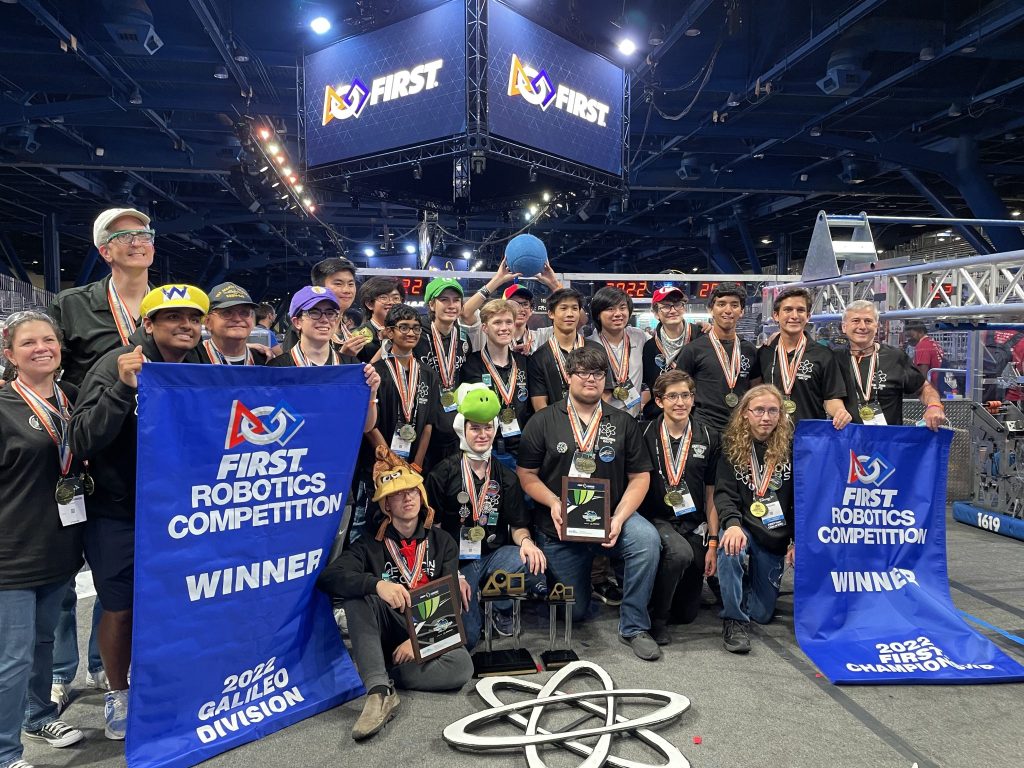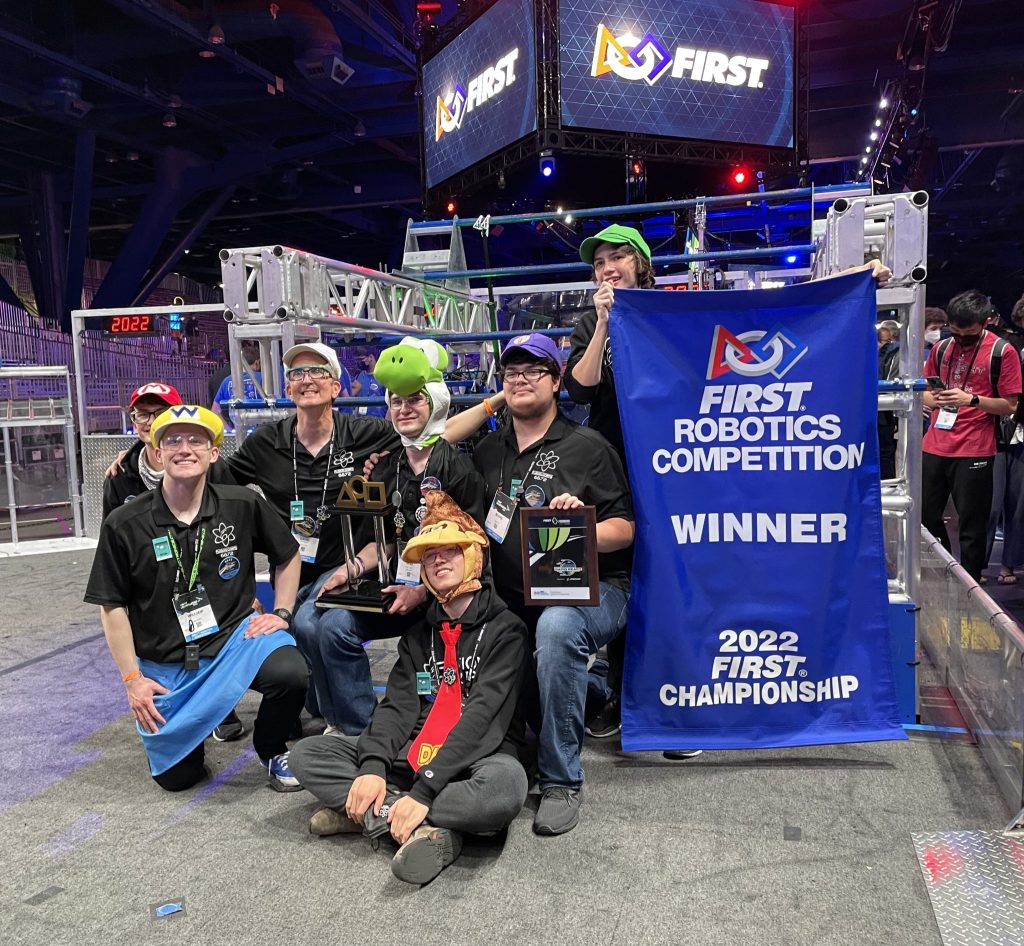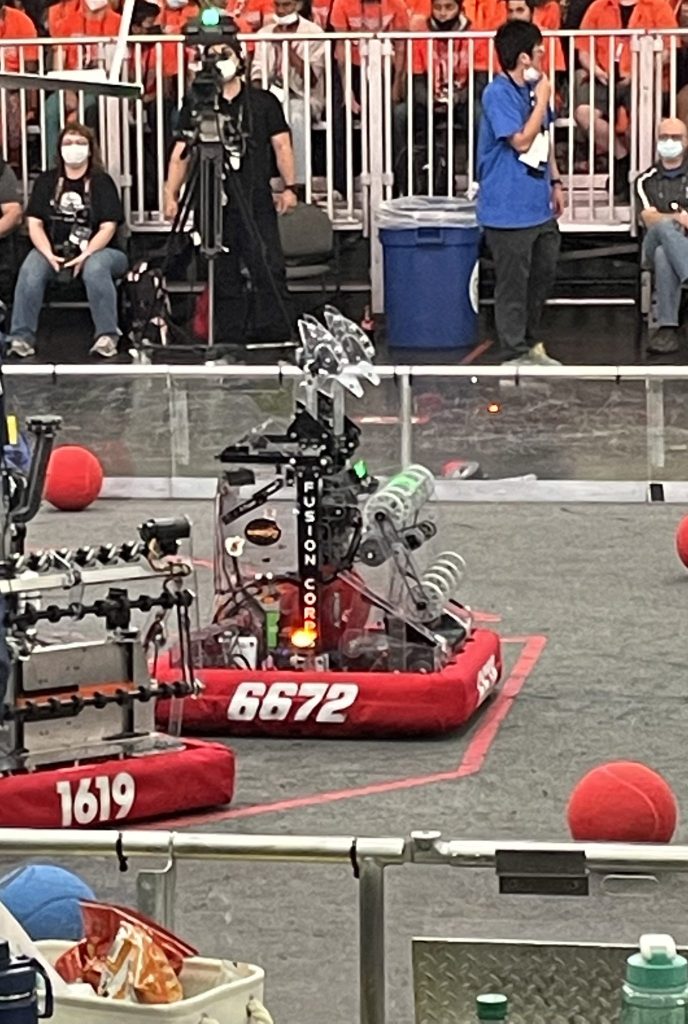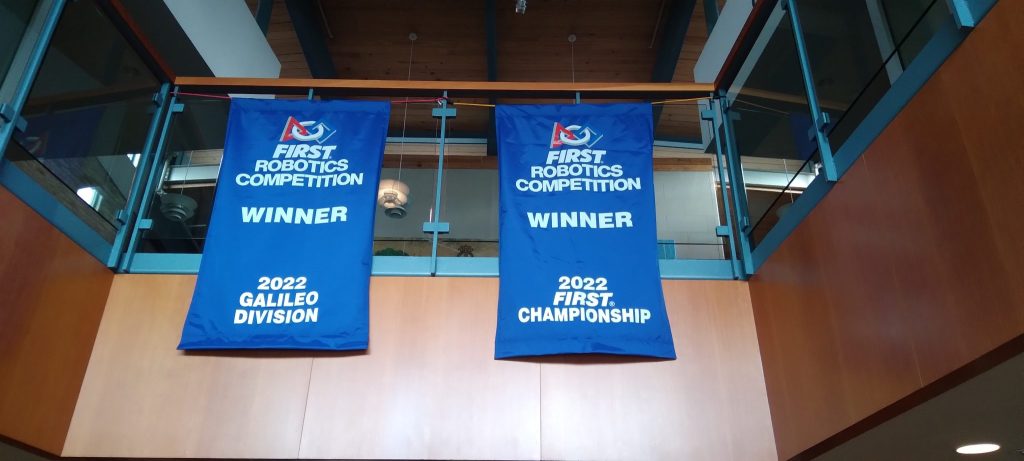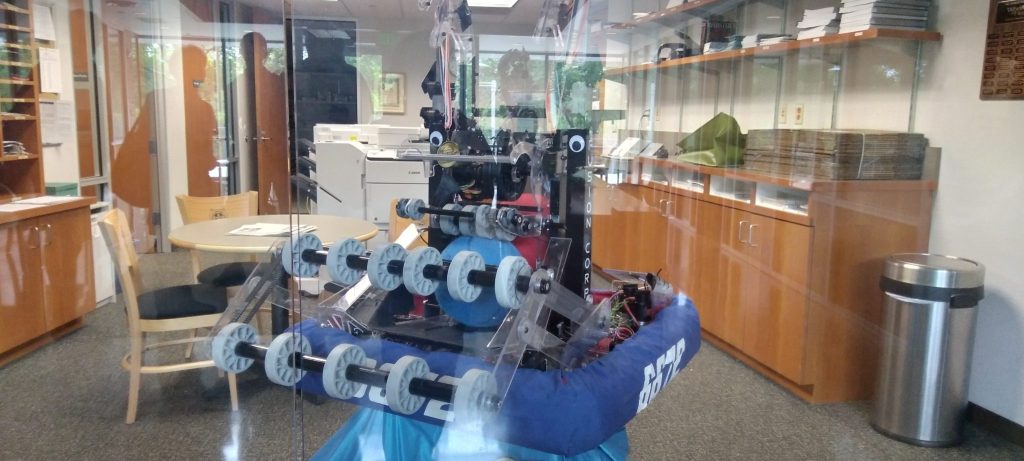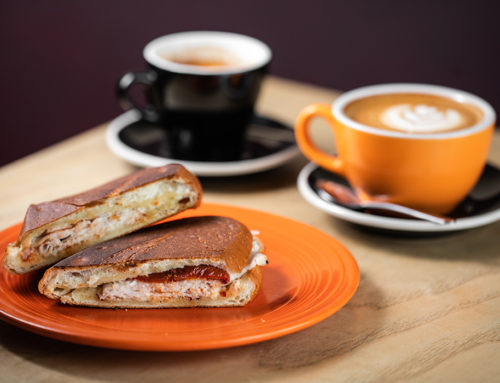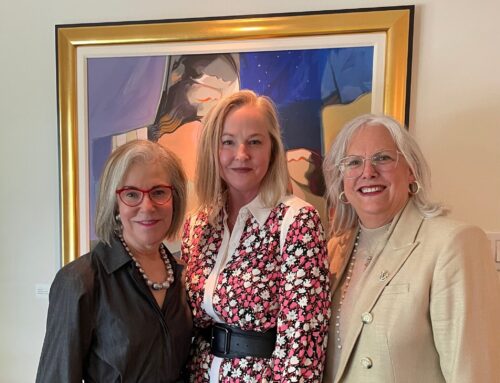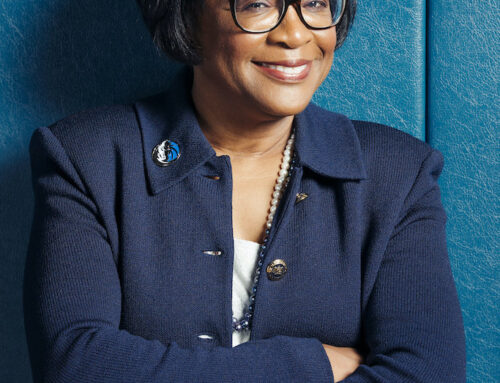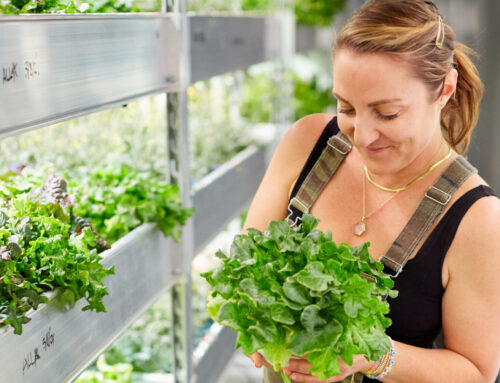Edit: Fusion Corps won the world championship, not just their division championship.
Cistercian Prepartory’s Fusion Corps robotics team took home the world championship during the FIRST Robotics Competition in Houston.
The Irving-based boys school has students hailing from around Dallas, including Preston Hollow, Lake Highlands and Lakewood.
Fusion Corps members I spoke with, including Blake Harris, William Coulter, Ryan Jackson and Nathan Comeaux were all from Preston Hollow. Andrew Oliver except is from North Dallas.
FIRST Robotics Competition is a four-day international event started in 1992. It was created as a way for students to develop hands-on skills designing and building a functional robot. Out of 3,200 worldwide teams, 456 teams from 12 countries qualify for the world competition in Houston.
Those 456 teams are split into six divisions, each named after a famous scientist. Fusion Corps, a team of 40, was in the Galileo Divsion.
Though other Texas teams were there, Fusion Corps was the only team that advanced as a division winner to the final playoff rounds at the event after ranking 13th at the Texas state competition on April 7-9. FIRST Robotics Competition took place April 20-23. The team leaders, under supervision of robotics school liaison Father Mark Ripperger, include:
Ryan Jackson, junior and co-engineering captain
Nathan Comeaux, senior and business captain
Andrew Oliver, junior and programming captain
Blake Harris, senior and co-engineering captain
William Coulter, junior and pit crew lead
Resilience, the team’s robot, was operated with X-box-like controllers from members behind a glass to move it across the floor and shoot balls. The team had from January to March to create the robot for the competition and faced multiple setbacks along the way, including the snowstorm, fixing the climb on the robot and computer crashes.
- Cistercian robotics team
- Photo courtesy of Juliette Coulter
- Photo courtesy of Juliette Coulter
- Photo by Raven Jordan
- Resilience. Photo by Raven Jordan
The team went with the name “Resilience” to embody how often it bounced back, even through the pandemic and snowstorms.
“This entire season was just about bouncing back from the beating. And I think the entire team made it more than just a rebuilding year,” Jackson says. “It was actually like a progressive year wasn’t just trying to get back to where we’ve actually leapt ahead.”
Fusion Corps won several other awards and competitions as well, including one for creativity and the Industrial Design Award.
“It’s one of the highest engineering awards you can get, and we got it for modularity of the robot,” Jackson says. “Any aspect of the robot can be taken off and replaced without affecting the other parts of the robot.”
Other teams at the competition used advanced algorithms with their robots, but Fusion Corps went with less complicated codes.
“We were seeing teams that were using advanced algorithms that literal NASA engineers designed, or helped them design, using adjustable code, enter it and double flywheel,” Comeaux says. “Then we’re just like, “We’re out of here with a single wheel, we’re able to at least match. But I think we were kind of able to prove that you don’t have to be super complicated to be able to do well.”


